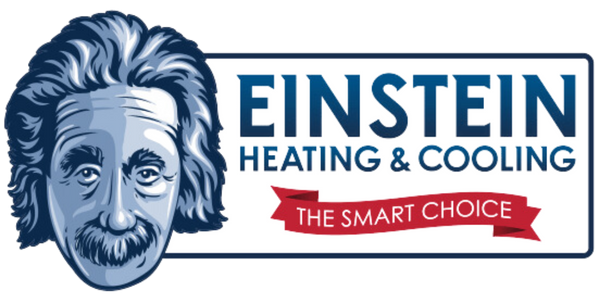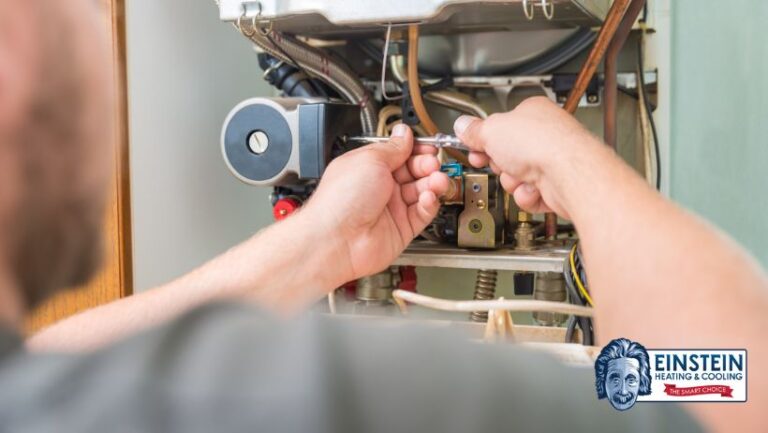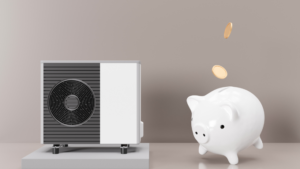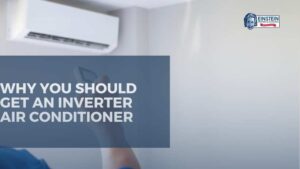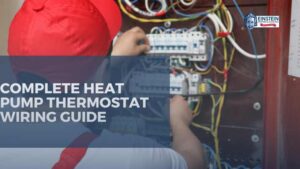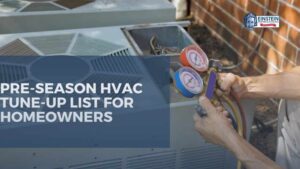Are you experiencing problems with your furnace? You’re not alone. Furnace issues can be frustrating and disruptive, especially during the cooler months when you rely on your heating system the most. Fortunately, with the right knowledge and guidance, many common furnace problems commonly experienced in Phoenix can be resolved effectively. We’ll explore 19 of the most frequent furnace issues homeowners encounter in Phoenix and provide practical fixes to keep your HVAC system running smoothly in our Arizona climate.
1. Furnace Not Producing Heat
- Check the thermostat settings: Begin by ensuring that your thermostat is set to the desired temperature. Sometimes, incorrect settings can lead to the furnace not producing heat.
- Inspect the air filter for blockages: A clogged or dirty air filter can restrict airflow, causing the furnace to malfunction. Regularly clean or replace the filter to maintain proper airflow.
- Examine the pilot light (for gas furnaces): If you have a gas furnace, check the pilot light. If it’s out, relight it following the manufacturer’s instructions. A properly lit pilot light is crucial for igniting the burner and producing heat.
- Ensure the circuit breaker is not tripped: Check the circuit breaker or fuse box to ensure that the furnace’s electrical supply is not interrupted. If the breaker has tripped, reset it, and if it continues to trip, consult an electrician or HVAC technician.
2. Insufficient Heat
- Replace or clean the air filter: As mentioned earlier, a clean air filter is essential for proper airflow. Replace or clean the filter regularly to ensure efficient heating.
- Check for blocked or closed vents: Ensure that all vents and registers in your home are open and unobstructed. Blocked vents can reduce heat distribution.
- Verify that your thermostat is working correctly: If the thermostat is malfunctioning or outdated, it may not accurately control the furnace. Consider upgrading to a programmable thermostat for better temperature control.
- Inspect the heat exchanger for damage (if applicable): A damaged heat exchanger can result in heat loss. Have a professional HVAC technician inspect and repair or replace it if necessary.
3. Frequent On and Off Cycling
- Check the thermostat placement: Ensure that the thermostat is located away from heat sources, drafts, and direct sunlight. These factors can lead to frequent cycling.
- Replace a malfunctioning thermostat: If the thermostat is faulty and unable to maintain a consistent temperature, replace it with a new one.
- Ensure proper airflow by cleaning vents and ducts: Clean vents, ducts, and registers regularly to prevent airflow restrictions that can trigger frequent cycling.
4. Uneven Heating Throughout the House
- Balance the distribution of warm air by adjusting dampers: If you have a zoned heating system, adjust the dampers to balance heat distribution in different areas of your home.
- Seal air leaks and insulate your home to prevent heat loss: Proper insulation and sealing gaps and leaks in your home’s envelope can help maintain even temperatures.
- Have your HVAC system professionally evaluated for any issues: You must know when to call a furnace repair service as the timing can impact the efficiency of your system. A professional HVAC technician can assess your system’s efficiency and make necessary adjustments to ensure even heating.
5. Unusual Furnace Noises
- Identify the type of noise (e.g., rattling, squealing, banging): Different noises can indicate specific issues. Identifying the type of noise can help pinpoint the problem.
- Investigate and address specific issues associated with the noise: For each type of noise, consult with an HVAC technician to diagnose and resolve the underlying problem.
- Schedule maintenance to prevent future noise problems: Regular furnace maintenance can catch and address potential issues before they become noisy and disruptive.
6. Furnace Blower Continuously Running
- Check the thermostat fan setting: Make sure the thermostat’s fan setting is on “auto” rather than “on.” This setting should control the blower’s operation.
- Inspect and replace a faulty limit switch: If the limit switch is malfunctioning, it may cause the blower to run continuously. Consult a professional technician to replace the faulty switch.
- Examine the air filter for clogs: A clogged air filter can also lead to continuous blower operation. Regularly clean or replace the filter to prevent this issue.
7. Furnace Blower Not Running
- Verify the thermostat settings: Ensure that the thermostat is set to the desired temperature and mode (heat). If the thermostat is set correctly, but the blower is still not running, proceed to the next steps.
- Check for a blown fuse or tripped circuit breaker: A blown fuse or tripped breaker in the furnace’s electrical system can prevent the blower from running. Inspect the electrical panel and reset the breaker or replace the fuse as needed.
- Test the blower motor for malfunction: If the blower motor is not functioning, it may need repair or replacement by a professional technician.
8. Furnace Not Starting
- Confirm the thermostat is set correctly: Double-check that the thermostat is set to the desired temperature and mode (heat).
- Check for power supply issues: Ensure that the furnace is receiving power. If not, inspect the electrical panel, fuses, or circuit breakers for issues.
- Inspect the ignition system (for gas furnaces): Gas furnaces rely on an ignition system to start. If the ignition system is faulty, consult a professional to diagnose and repair it.
9. Frequent Cycling of the Ignition
- Clean or replace a dirty or malfunctioning flame sensor: The flame sensor is a crucial safety component. A dirty or malfunctioning sensor can cause frequent ignition cycles. Clean or replace it as necessary.
- Ensure the gas supply is sufficient and not blocked: Insufficient gas supply or blockages can disrupt the ignition process. Check for gas line issues and correct them if present.
- Adjust the gas pressure settings (if necessary): If the gas pressure is too high or too low, it can affect ignition. Consult a professional to adjust the gas pressure to the manufacturer’s specifications.
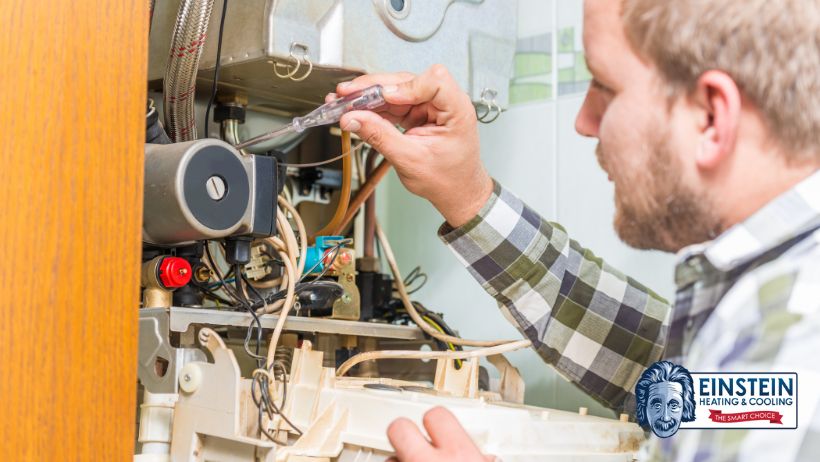
10. Furnace Pilot Light Won’t Stay Lit (Gas Furnaces)
- Clean the pilot assembly and the flame sensor: A dirty pilot assembly or flame sensor can lead to pilot light issues. Clean these components and ensure proper operation.
- Replace a malfunctioning thermocouple: The thermocouple is responsible for maintaining the pilot light. If it’s malfunctioning, replace it to ensure the pilot light stays lit.
- Check for gas supply issues: Ensure that the gas supply to the furnace is uninterrupted and at the correct pressure. Gas supply problems can affect the pilot light.
11. Furnace Not Heating Enough
- Inspect and replace a clogged or dirty air filter: A dirty filter can impede airflow, leading to inadequate heating. Regularly clean or replace the filter.
- Ensure proper thermostat placement and settings: The thermostat’s location and settings can impact heating performance. Make sure it’s not obstructed and set correctly.
- Check the heat exchanger for issues (if applicable): A damaged or faulty heat exchanger can result in insufficient heating. Have it inspected and repaired by a professional if needed.
12. No Airflow From Vents
- Confirm that the thermostat fan setting is “on”: Check the thermostat’s fan setting. It should be set to “on” to ensure continuous airflow.
- Replace a faulty blower motor: If the blower motor is not functioning, it won’t push air through the vents. Consult a professional to replace the motor.
- Clear obstructions in the ductwork or vents: Inspect the ductwork and vents for any obstructions, such as debris or furniture, that may be blocking airflow.
13. Furnace Not Responding to Thermostat
- Check the thermostat batteries: If your thermostat is battery-powered, ensure that the batteries are not depleted. Replace them if necessary.
- Verify the thermostat wiring and connections: Inspect the thermostat’s wiring and connections to ensure they are secure and correctly configured.
- Replace a malfunctioning thermostat: If the thermostat is faulty and unresponsive, consider replacing it with a new, compatible model.
14. Furnace Overheating
- Replace or clean the air filter regularly: Regular air filter maintenance is essential to prevent the furnace from overheating. Replace or clean the filter according to the manufacturer’s recommendations.
- Ensure proper ventilation around the furnace: Adequate ventilation around the furnace is crucial to prevent overheating. Avoid placing objects or obstructions near the furnace.
- Check the blower motor for issues: A malfunctioning blower motor can contribute to overheating. Have the blower motor inspected and repaired if necessary.
15. Frequent Furnace Short Cycling
- Inspect and replace a malfunctioning thermostat: If the thermostat is faulty and causing short cycling, consult a professional technician to replace it with a properly functioning one.
- Address issues with the heat anticipator (if applicable): Some thermostats have a heat anticipator setting that can affect cycling. Adjust it according to the manufacturer’s instructions or consult a professional.
- Maintain proper airflow by cleaning vents and ducts: Regularly clean vents, ducts, and registers to ensure proper airflow, which can help prevent short cycling.
16. Condensation or Water Leaks
- Inspect and clear condensate drain lines: Blockages in condensate drain lines can lead to condensation and water leaks. Clear any obstructions to allow proper drainage.
- Check for issues with the condensate pump: If your furnace has a condensate pump, ensure that it is functioning correctly. A malfunctioning pump can lead to water leaks.
- Address any problems with the heat exchanger (if applicable): If the heat exchanger is damaged or defective, it can result in condensation and water leaks. Have it inspected and repaired by a professional HVAC technician.
17. Furnace Ignites but Shuts Off Quickly
- Clean the flame sensor: A dirty or malfunctioning flame sensor can cause the furnace to ignite but shut off quickly. Cleaning or replacing the sensor can resolve this issue.
- Inspect and replace a malfunctioning high-limit switch: A malfunctioning high-limit switch can lead to premature shut-off. Consult a professional technician to replace the faulty switch.
- Ensure proper ventilation and airflow: Adequate ventilation and unrestricted airflow around the furnace are essential to prevent overheating and frequent shut-offs.
18. Strange Odors From the Furnace
- Identify the type of odor (e.g., burning, musty, metallic): Determine the specific odor to narrow down its potential source and cause.
- Investigate and address specific issues associated with the odor: Depending on the type of odor, consult with an HVAC technician to diagnose and resolve the underlying problem.
- Schedule maintenance to prevent future odors: Regular furnace maintenance can help prevent unusual odors by addressing potential issues before they become a concern.
19. Carbon Monoxide Detector Alert
- Evacuate the premises immediately: If your carbon monoxide detector alerts you to high levels of carbon monoxide, leave your home immediately and seek fresh air.
- Shut off the furnace and any gas appliances: Turn off the furnace and any other gas appliances in your home to prevent further carbon monoxide emissions.
- Seek professional Furnace Repair assistance to address the carbon monoxide issue: Contact a licensed HVAC technician to inspect and repair the source of carbon monoxide leakage, ensuring your safety and the safety of your household.
By addressing these common furnace problems promptly and following the recommended fixes, you can maintain a comfortable and efficient heating system in your Phoenix, Arizona home. However, it’s essential to remember that safety should always be a priority for Phoenix residents. If you ever encounter a furnace problem that you’re unsure about or cannot resolve on your own, it’s advisable to consult a licensed HVAC professional in Phoenix for expert assistance. Regular furnace maintenance and professional inspections can also help prevent many of these issues, ensuring that your heating system operates reliably throughout the cooler months in Phoenix.
Choose Einstein Heating and Cooling for Your Furnace Repair Needs
When it comes to addressing your furnace repair needs in Phoenix, Arizona, make the smart choice by selecting Einstein Heating and Cooling. Our experienced team of professionals is dedicated to providing top-notch furnace repair services tailored to the needs of Phoenix residents. We understand the importance of a properly functioning heating system, especially during the cooler months in Phoenix. Whether you’re facing issues with insufficient heat, unusual furnace noises, or any other heating-related problems specific to the Phoenix climate, we have the expertise to diagnose, repair, and optimize your furnace’s performance. With a commitment to exceptional service and customer satisfaction, choosing Einstein Heating and Cooling means choosing warmth, comfort, and peace of mind for your Phoenix home. Trust us to keep your furnace running efficiently and your home cozy throughout the heating season in Phoenix, Arizona.
